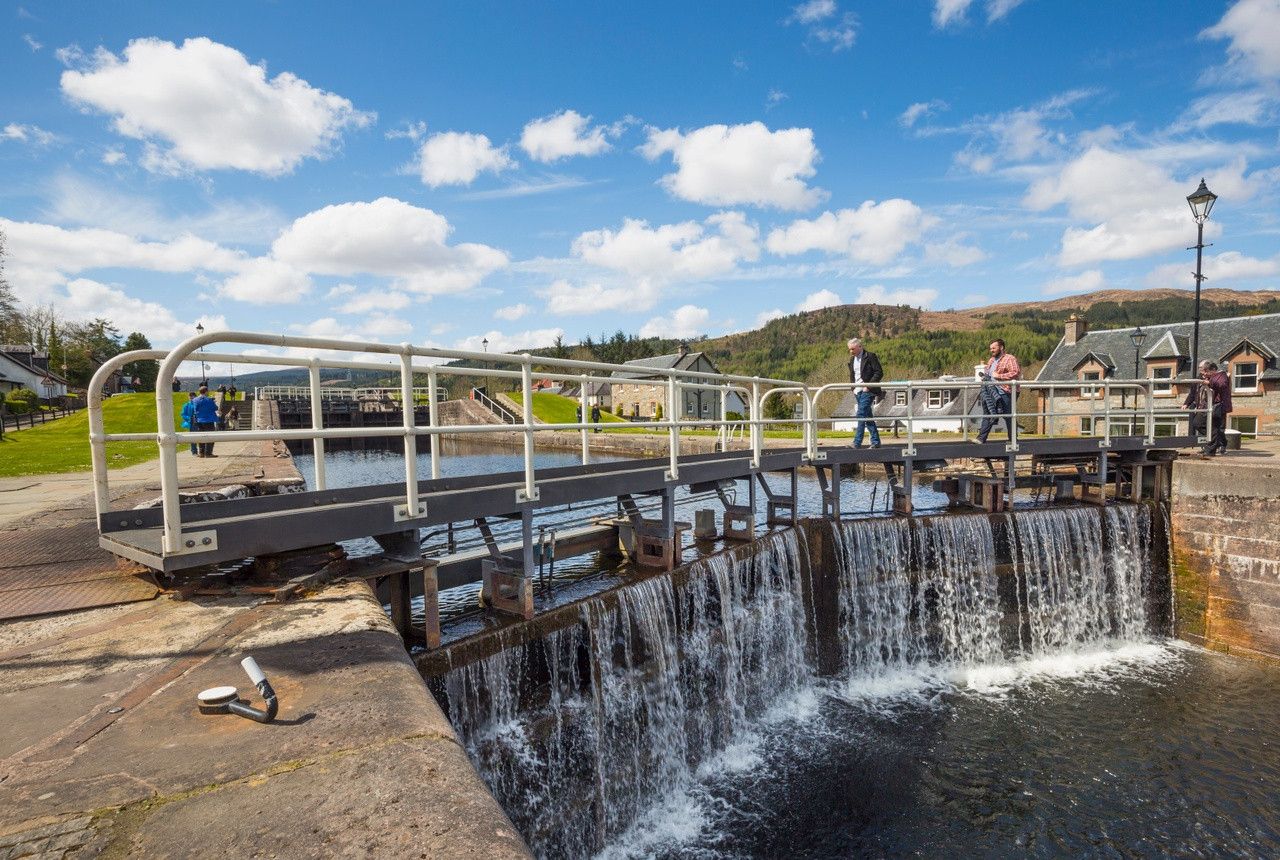Imagine waking up at eye-level with swans, and cygnets. Opening your curtains to see a Highland cow. Cruising at 5 knots through some of Scotland’s most glorious scenery, and sneaking in and out of our towns and cities on hidden waterways. All that is at your fingertips when you explore Scotland’s canals.
Once the ‘motorways’ of the early Industrial Revolution, today, our canal system – all 137 miles (220km) of it – is your key to unlocking the watery highways and byways that helped build modern Scotland.
With the Caledonian Canal, and The Union Canal, both celebrating their 200th birthdays this year, 2022 is the ideal year to join the waterborne celebrations.

Canals for all moods
From the Caledonian Canal, which cuts through Loch Ness and the Great Glen; the Crinan Canal, known as Scotland’s ‘most beautiful shortcut’, The Union Canal, which leads into Edinburgh, to the Forth and Clyde Canal, which passes through Scotland’s industrial heartland, our historic waterways capture every aspect and mood of Scotland.
Whether you hire a traditional narrowboat, a modern cabin cruiser, a sailing yacht, join an organised group cruise on a hotel boat/holiday barge or even travel by canoe, kayak, or paddleboard, our inland waterways are yours to explore.
Don’t want to get your feet wet, then the canal towpaths offer peaceful, walking and cycling routes. They offer an ideal spot for a day’s fishing, and the perfect place to slow down, and immerse yourself in nature.

A little bit of history
Back in the late 1700s, when Scotland’s roads were little more than dirt tracks, we needed waterways to speed cargo and passenger traffic between Edinburgh and Glasgow. As well as cargo, the canal also offered safe seasonal passage for the east coast fishing fleet to reach the rich herring grounds of the Irish Sea.
From ‘hoolets' – small sailing boats named after the Scottish word for ‘owls’, to narrowboats, to steamships, soon you could travel between the two cities in comfort, being wined and dined along the way.
Today, thanks to past generations of canal enthusiasts, and the hard work of the national body, Scottish Canals, our surviving inland waterways continue to provide a unique and slow-paced way to soak up the best of Scotland.

Our Lowland canals
Historically, if you wanted to join the Union Canal from the Forth and Clyde, to sail into the heart of Edinburgh, you faced an exhausting flight of 11 locks, which took almost a full day to transit. These locks were dismantled in 1933, breaking the historic canal link between Scotland’s capital and our biggest city.
In 1998, work started on the ambitious £84.5 million Millennium Link project, to re-join the Forth and Clyde canal with the Union canal. The answer to that missing flight of locks came in the shape of the magnificent Falkirk Wheel. The feat of engineering is the world’s first and only rotating boat lift. It was opened in 2002 by Her Majesty, The Queen, and in 2022 celebrates its 20th birthday.
The Wheel, an engineering miracle, is 35 metres tall, equal to eight double-decker buses stacked on top of each other. Each 600-tonne gondola holds 500,000 litres of water, enough to fill an Olympic swimming pool. Yet it uses only 1.5kWh of energy to turn, the same amount as it would take to boil eight household kettles.
Today, the Wheel is not only a crucial link in Scotland’s canal network but also a major tourist attraction. It attracts thousands of curious visitors each year.

Our Highland Canals
At just nine miles (14km) long, the Crinan Canal, opened in 1801, was designed to provide a safe route between the Firth of Clyde and the Inner Hebrides. Running between the village of Ardrishaig on Loch Gilp, and the Sound of Jura, the route avoided the long diversion around the Kintyre peninsula, and the exposed Mull of Kintyre.
It is often referred to as the ‘Royal Route’, after Queen Victoria travelled along the canal during a holiday in the Scottish Highlands in 1847. Today, it still provides a scenic link for yachtsman and leisure sailors, sailed by 2,000 boats annually. Its towpath is part of National Cycle Route 78, linking Campbeltown, Oban, Fort William, and Inverness.
The Caledonian Canal – are you ready? This is the big one.
Running for 60 miles (100km), from Fort William to Inverness, the Caledonian links the west and east Highlands. Running through some of Scotland’s most beautiful and dramatic scenery, only a third of the Caledonian’s length is man-made canal. The rest of the route runs through Loch Dochfour, Loch Ness, Loch Oich, and Loch Lochy.
Sail past ancient castles, as eagles soar overhead, while the mountains of the Great Glen glide past. Oh, and keep your eyes peeled for the Loch Ness Monster!
Climb aboard!
For further information about canal holidays, boat hire and canal festivals visit: Scottish Canals